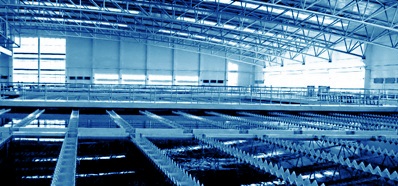Drum screens
Functions of a drum screen
The drum screen serves as a device designed for the mechanical purification of wastewater, performing the function of retaining large organic and mineral pollutants. Its purpose is to prepare the liquid for subsequent purification stages.
In treatment facilities following the sewage pumping station (SPS), it’s important to install screens with openings not exceeding 16 mm, with a flow rate through the openings not exceeding 1 m/s.
There are several types of screens based on their design:
- Screens with rectangular rod-shaped bars (fixed, consisting of parallel metal rods in a rectangular frame).
- Crushing screens.
- Stepped self-cleaning screens.
- Auger screens.
Mechanical cleaning of the screens becomes necessary when the amount of debris exceeds 0.1 tons per day. This task can be performed manually using rakes or mechanized with mechanical rakes or self-cleaning systems (stepped, auger).
Debris collected from the screens is either crushed and sent for joint processing with sediment from treatment facilities or removed for processing at solid household and industrial waste treatment sites.
Due to changes in the composition of debris over time, screen designs increasingly use fine openings from 2 to 6-8 mm. Instead of traditional round and rectangular rods, narrow plates (3-4 mm wide) are used. This allows the use of sediment screens formed on screens with fine openings as an additional means for more effective retention of debris. The presence of the screen positively affects the efficiency of debris retention, floating impurities (grease, oil products), small fibers, and partially sand. In addition, the amount of floating substances on the surface of sedimentation tanks is significantly reduced.
There is an alternative to using screens in the form of self-cleaning filtering devices (SCFDs). Mechanical cleaning of wastewater from large impurities using SCFDs allows retention of pollutants larger than 1.5 mm due to their design.
The drum screen (sieve) is used for the preliminary purification of industrial wastewater from large impurities. Automatic self-cleaning of the drum allows it to operate without operator intervention. The filter drum of the screen, made of triangular wire wound in a spiral, passes the purified water and retains particles exceeding the size of the protrusion on it.



